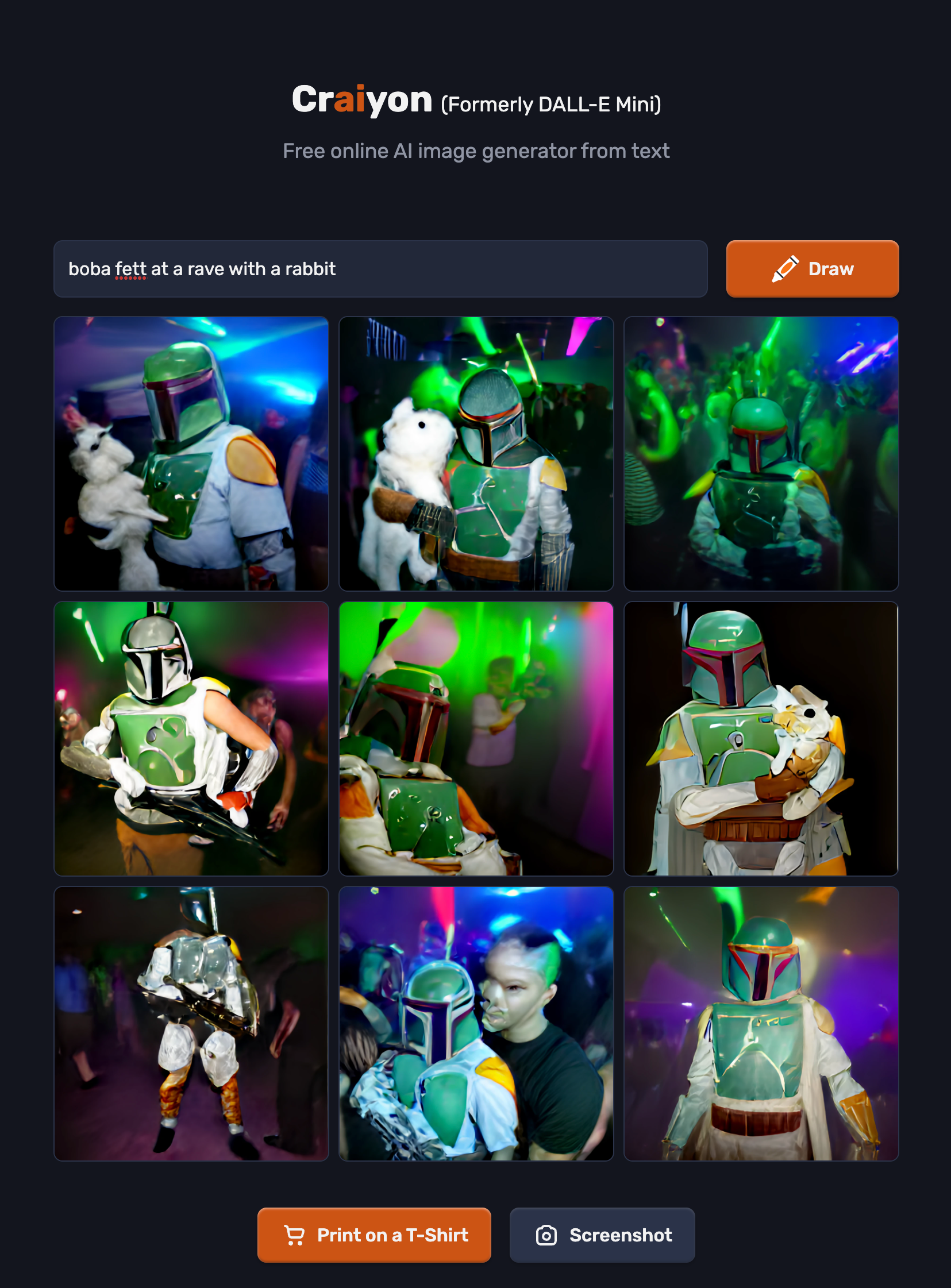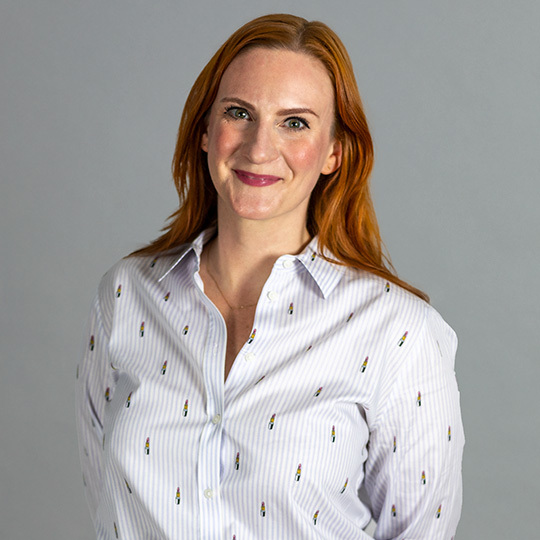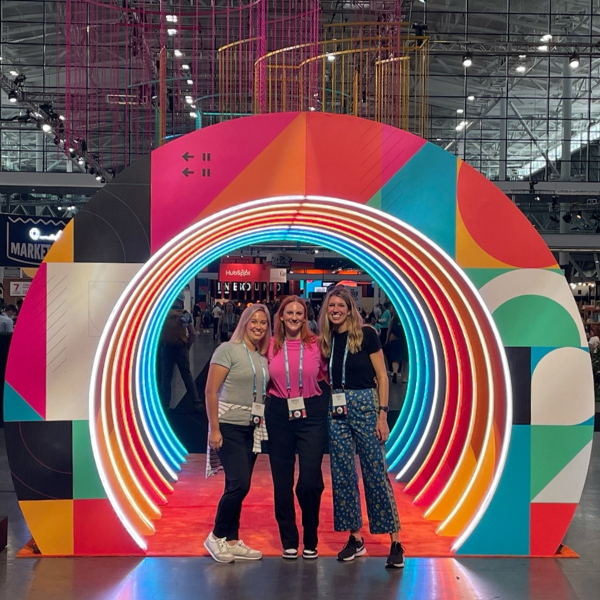If you’re as chronically online as I am, you couldn’t open a social app in December without seeing artificial intelligence portraits of your friends and peers. Many of the portraits come from the app Lensa, which can take a photo and transform it into a variety of art styles, from anime to watercolor to CGI. The app can turn you into a superhero, a fairy, an alien creature and more. It can even adjust the tilt of your head or eyeline from the original photo to better fit the new portrait.
Lensa has exploded in popularity in recent days, but it is just the latest in a rising wave of AI content and creative generators. Over the summer, a micro TikTok trend saw users submitting increasingly absurd prompts to AI art generators such as Craiyon or the Wombo Dream app to see what kind of surreal images it would produce—and how well the artificial intelligence could hit the mark on what it was asked to create.
For example, here is what Craiyon produces for the prompt “Boba Fett at a rave with a rabbit.”

Craiyon’s results were often weird (some might say haunting), but AI image generators can be extremely advanced. In fact, over the summer, judges at the Colorado State Fair awarded first place and a $300 prize in the digital arts competition to a piece of art that turned out to be created using Midjourney, another artificial intelligence program that creates images from a text prompt. The win caused controversy and sparked debate about how AI-generated art can and should be measured against works created by humans.
Visual art isn’t the only thing growing in the AI space, either. Writing and text-generating tools are also getting more and more sophisticated. An AI chatbot called ChatGPT is so realistically conversational with its writing that it is fooling humans on the other end of the conversation.
And while editing tools using some amount of AI have been around for a long time, (remember Clippy?), Google recently announced a new prototype AI called Wordcraft that can whip up creative writing based on prompts. According to Google, Wordcraft is meant to help writers add interest and refine their own writing much as a human editor would, but it is also capable of creating unique stories—and the technology is only bound to continue to develop.
So, is AI going to take our jobs as designers, writers, and content creators? It shouldn’t.
For one thing, issues around bias and bigotry can be a big factor. In particular, generators that crawl for imagery or info from across the internet run the risk of pulling unsavory, offensive, and even pornographic material into their works. They also have already garnered criticism for reinforcing sexist and especially racist stereotypes.
In addition, major questions have arisen about AI programs’ ability to incorporate human-created work, whether it be image elements or an art or writing style, into their new creations without crediting or compensating the sources they are pulling from. Visual artists especially are raising serious concerns about this theft of their creativity and work.
At the end of the day, AI-generated works lack the forethought, sensitivity, and strategy of a human touch. They can be a great tool to add value, but artificial intelligence cannot create with the same expressive drive and heft as a person drawing on their emotions and life experiences. This technology certainly isn’t going anywhere, but the conversations around what is ethical, legal, and best practices will continue. And in the meantime, artists, writers, and developers will continue to produce the kind of work a robot can’t.






